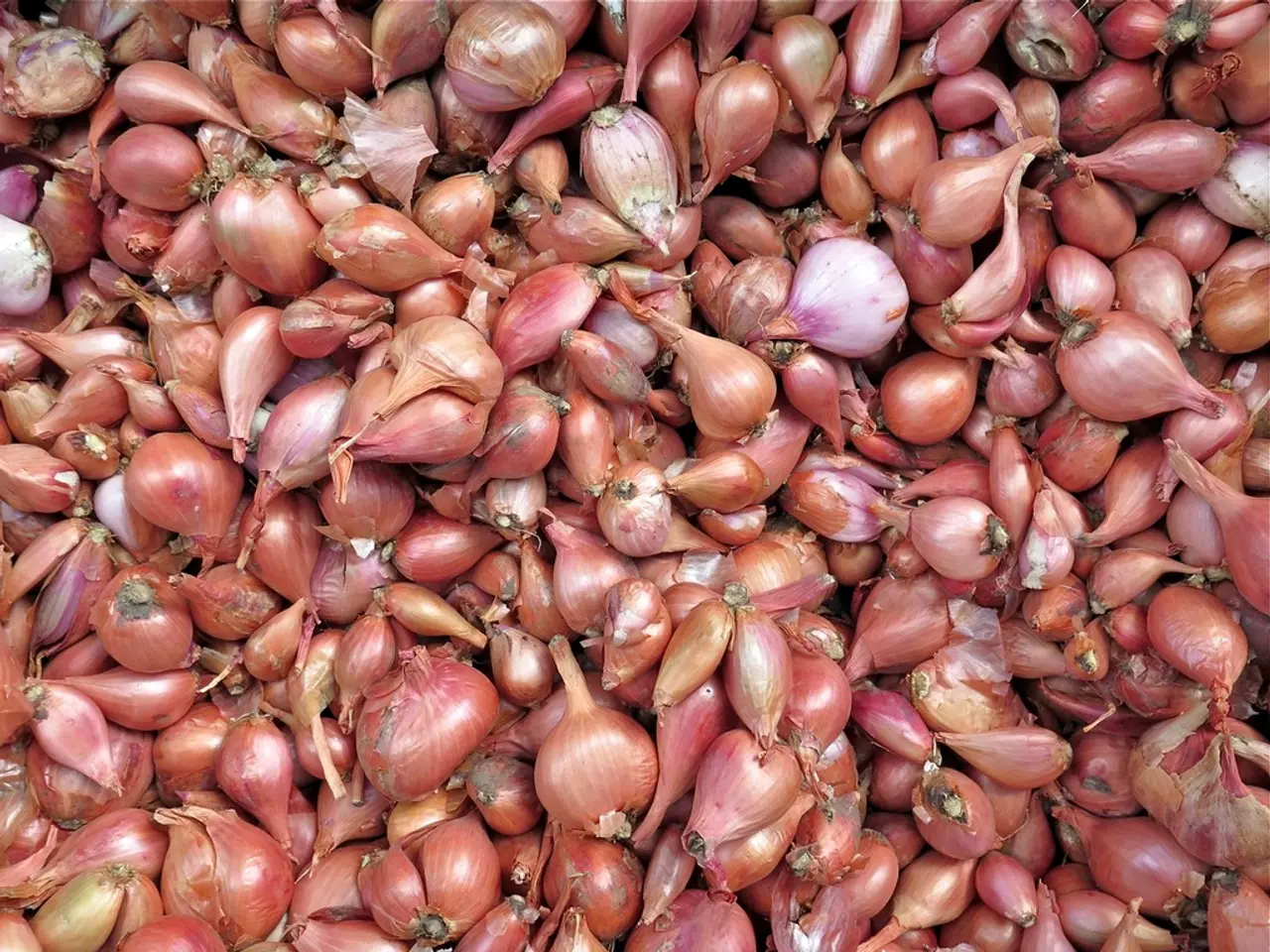Onion Facts: Key Information About This Veggie
Growing onions just got simpler! This guide covers everything you need to know about cultivating onions, shallots, garlic, and overwintering onions--plus some fascinating facts about them.
Onions
Growing Onions
- From Seeds: Start indoors 8 weeks before the last frost date. Place seeds 1/4 to 1/2 inch deep in loose, seed-starting mix. Alternatively, directly plant onion sets or transplants outdoors when the soil is workable, spacing them approximately 5-10 cm (2-4 inches) apart in rows with 25-30 cm (10 inches to 1 foot) between.
- The Right Spot: Onions love full sun (6-8 hours) and well-drained, rich, fertile soil that isn't newly manured.
- Sunlight & Water: Ensure a weekly watering of at least 1 inch, as onions have shallow roots.
- Fertilizing: Fertilize the bed before planting with a balanced fertilizer (e.g., 10-10-10), placing it in a narrow band between rows, 2-3 inches from the plants. Side-dress with fertilizer 4-5 weeks after planting to support growth.
- Harvest: Mature in about 60-120 days, depending on variety and weather conditions.
How to Store Onions
- Drying: Once leaves yellow and flop over, wait several weeks. During dry weather, carefully lift bulbs using a fork, laying them in the sun for a few days or in a greenhouse on mesh or a table for air circulation.
- Preservation: Bulbs must be unblemished and dry to avoid rotting. Trim leaves to 4 cm from the bulb, then store in net bags or ropes in a cool, dry, airy place. See our complete guide on storing onions.
Shallots
Growing Shallots
- Planting: Grow from sets or bulbs in fall or early spring, spacing 15-20 cm (6-8 inches) apart with 30-45 cm (1 to 1.5 feet) between rows. They can overwinter in many climates if planted in fall.
- The Perfect Spot: Similar requirements to onions, preferring loose, well-drained, fertile soil with full sun exposure.
- Care: Similar to onions, incorporate organic matter before planting and avoid overcrowding.
- Harvest: Mature in 90-120 days.
Garlic
Growing Garlic
- Planting: Plant cloves in fall (before the ground freezes) for overwintering and spring growth.
- Spacing: Space cloves 10-15 cm apart and rows about 30 cm apart.
- The Ideal Conditions: Like onions, garlic prefers loose, fertile, well-drained soil with full sun.
- Mulching: Garlic benefits from a mulch layer to protect overwintering cloves and conserve moisture.
- Harvest: Typically harvested in mid to late summer when leaves start to yellow.
Overwintering Onions
Growing Overwintering Onions
- Planting: Plant sets or seedlings in late fall. They can survive winters in many regions, especially if planted in sheltered spots or with mulch covering.
- Care: Similar soil and fertilization needs as regular onions. Overwintered onions resume growth early in spring, providing an earlier harvest.
For comprehensive advice on allium planting, spacing, and timing, see the summary table below:
| Allium | Planting Time | Spacing (inches/cm) | Days to Harvest ||----------------|--------------|-----------------------|-----------------|| Onions | Early spring or overwinter (mild climates) | 2-4 in (5-10 cm) apart; rows 10-12 in (25-30 cm) apart | 60-120 || Shallots | Fall or early spring | 6-8 in (15-20 cm) apart; rows 12-18 in (30-45 cm) apart | 90-120 || Garlic | Fall (overwintering) | 4-6 in (10-15 cm) apart; rows around 12 in (30 cm) apart | 210-270 (7-9 months) || Overwintering Onions | Late fall | Same as onions | Early harvest in spring |
Growing onions, shallots, garlic, and overwintering onions comes down to proper soil preparation, spacing, watering, and fertilization at key growth stages. Shallots and garlic are best planted in the fall to overwinter, while onions can be started in spring or fall, depending on climate. Happy growing!
For visual learners, check out the YouTube video titled "Grow Onions & Shallots in buckets," showcasing practical container and greenhouse planting tips. Enjoy!
- For a balanced, holistic lifestyle, consider integrating onion cultivation into your home-and-garden activities for a rewarding food-and-drink experience.
- The science of gardening can extend beyond the backyard with innovative practices such as crop rotation, which can enhance soil health and increase yields for onions, shallots, and garlic.
- Incorporating onions, shallots, and garlic into your cooking recipes can contribute to a health-and-wellness-focused diet due to their rich nutritional content, further influencing your lifestyle choices.
- To complete the circle, save some leftover onions for nutrient-dense homemade stocks, ensuring minimal food waste and a healthier meal preparation routine.







